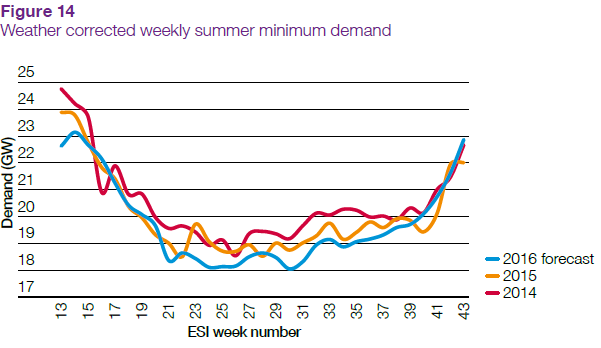Demand side response in energy sector gets a double boost
Written by Mark Sait
Posted on April 13, 2016
The National Grid and Ofgem have made moves in the past week to improve flexibility in the way businesses and organisations manage their energy consumption.
Ofgem, the energy regulator, wants to find out more about “Demand Side Response” (DSR) in UK business and has launched a survey to gather information.

Meanwhile, the National Grid will actively encourage businesses to adapt their energy usage patterns this summer to match more closely the production peaks and troughs.
Large companies with high energy use will be given cash to move energy-intensive operations to times when there is low demand.
The National Grid is preparing for the months when the country will produce excess electricity partly through “inflexible” sources – the renewables sector, which now contributes 24.7% of the total capacity.
Energy management
Its 2016 Summer Outlook Report advises that wind and solar warms will add to the complexities of energy management at a time when demand is expected to fall to a record low of about 35.7GW.
The new DSR scheme is intended to address this, particularly when electricity production reaches 67.4GW over the coming months.
Energy generation traditionally has been managed to some extent by the ability of power stations to scale back generation when required.
The Grid is promoting the Power Responsive initiative to energy-intensive companies as part of a £400 million investment into DSR.
The scheme, launched last summer, aims to balance out the energy supply chain through cash incentives for businesses that can reschedule operations like pumping and heating to lower demand periods.
Scale back
The Grid is also considering the option to ask wind and solar energy generators to scale back during peak periods.
The report says:
“Based on current data, there is a risk that we may need to ask inflexible generators to reduce their output during the weeks commencing 20 June, 25 July and 29 August. This assumes 1.6 GW of pumping.
“As we approach real time, this requirement may change depending upon the weather, wind conditions and the generation available on the day. We will continue to update this forecast during the summer and will inform and engage with inflexible generators where necessary.”
To counteract this potential need, the Grid is working with demand-response provider Flexitricity to trial a service that offers industrial, commercial and public-sector bodies financial incentives to become a part of a ‘virtual power stations’ network.
On offer with the Footroom service is a share of the £4.5 million fund pot from DSR initiative and encourages businesses and organisations to reduce generation or increase electricity consumption when requested.
Ofgem survey
The Ofgem survey into DSR should give the regulator a clearer picture of the barriers preventing industrial and consumers from implementing a demand management scheme.
The survey is looking at demand-led DSR, where processes are scaled back to reduce energy consumption from the Grid as well as generation-led DSR, where companies and organisations switch to stand-by sources of electricity.
Ofgem also wants to find out more about the role of aggregators and says:
“Many Industrial & Consumer customers engage in DSR via aggregators – organisations that coordinate consumers’ flexibility (demand or generation) to offer it where it is needed.
“As part of our flexibility programme, we are finding out which areas might benefit from flexibility and how we can support this transition.”